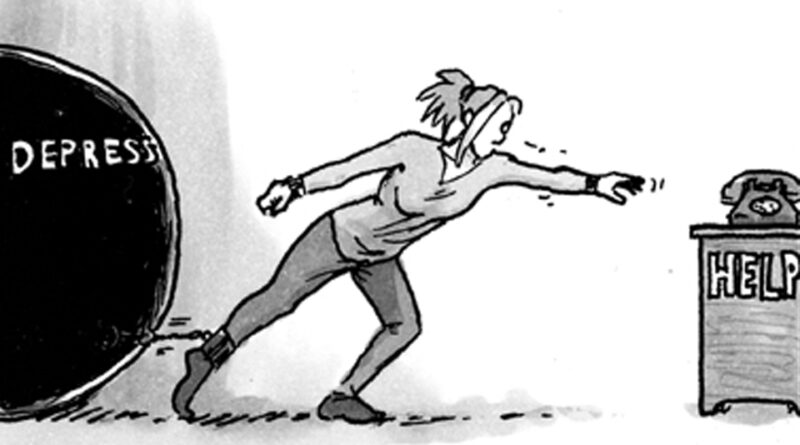Psychotherapy: Cutting Through the Stigma Hung Up on Suicide
[Please note that this page contains affiliate links. If you choose to purchase after clicking a link, I may receive a commission at no extra cost to you.]
Cutting Through the Wrists of the Stigma Hung Up on Suicide through things like psychotherapy.
Jumping off the bridge is the ultimate solution to a short-term problem.
Cutting Through the Stigma Hung Up on Suicide
The Golden Gate Bridge is in the United States, within the San Francisco Bay Area. It has a fatality rate of 98%.
It has claimed about 1,400 victims between 1937 to 2012. So for many years, when people decided to commit suicide, the most popular spot in North America was The Golden Gate Bridge.
As of 2013, 34 people had survived the 245 feet (75 m) fall at 121 km/h (75 mph), although some died shortly after due to internal injuries and or hypothermia.
In addition, Dr. Stacey Freedenthal discovered that 515 people intended on jumping off the bridge, that officials prevented from doing so. Only 7% of those people went on to take their own lives.
Freedenthal concluded from her finding that these suicidal thoughts and tendencies are almost always very short-term.
For example, the 29 people who survived the deadly leap from the golden bridge, some years later, said that as soon as they jumped, they instantly regretted it. So proper psychotherapy can be vital prevention before what causes people to want to take their own lives.
A Finish study found out of 224 people who attempted suicide treated in a hospital, within 12 years of those treated, only 8% would commit suicide.
A study in Sweden tracked 34 219 citizens after being hospitalized for attempted suicide. Researchers did a 3-to-9-year follow-up and found that only 3% would succumb to suicide.
There have been 177 studies worldwide researching how many people commit suicide after surviving suicide. Within ten years, 4% of people die by suicide.
The best ways to prevent suicide, suicidal tendencies and thoughts may be daily exercise and meditation routine. Running promotes endorphins in the brain. It creates the same thing cocaine or meth creates in the brain, which is dopamine. Without the stigma, proper psychotherapy can grow individuals emotionally and spiritually.
It also gives people a “runner’s high,” as the cannabinoid system in your brain becomes activated through running, which coincides with the nervous system.
Psychotherapy and Meditation
The same system that marijuana activates to create the high feeling it gifts.
Meditation shrinks the fear and emotion centre of the brain called the amygdala, well growing the frontal cortex, which is the decision making, rational and processing part of the brain, promoting neurogenesis, the growth of new brain cells well, increasing a person’s telomeres which are the end caps of DNA that shrinks as we age.
Meditation grows the length back of those DNA end caps.
In psychotherapy, it is often recommended to do spiritual things such as yoga and walks in forests or heavily treed areas to help ground you.
In addition, doctors will often prescribe nature walks to help get over mental illnesses like depression and anxiety in Japan.
A study done in Japan in 24 diverse forests found that just simply walking in the forest through the trees lowers heart rate, blood pressure and cortisol, which is the hormone that creates anxiety and stress.
Listen to your heart and feel the feelings from your gut. Ask God and the universe to help you find your purpose and why your spirit was chosen for this body in this lifetime, no matter what corner of the world you find yourself in.
It is essential to do what you love even if you might not make as much money as working another more readily available job.
You will be far more happy and far less stressed by doing so. Go back to school no matter your age and take something you have always enjoyed or thought about doing. If your friends aren’t inspiring you, give up those friends and find friends who do.
You won’t be going anywhere if you’re hanging out with people who aren’t going anywhere in life.
Think of suicidal thoughts, depression, and anxiety as waves in ocean waters.
When surfing through your consciousness, the waves may start small and manageable.
However, it may build-up to the point where you might almost fall off, and you catch yourself a few times from losing grip on reality.
Still, that wave might become massive, and the crash can be devastated, stating when the sun rises the next day, the thunder clouds have lifted, the tides have smoothed out, and you’re left with the beauty that has always been there all along.
And of course, the many varieties of psychotherapy can be very beneficial.
Over 100 Types of Psychotherapy
There are literally over 100 different types of psychotherapy, and the truth is almost all of them work well over a very long period.
The average time it takes someone to successfully compete for psychotherapy to get over their mental health issue is ten years.
The idea of psychotherapy therapy unlocks what the unconscious mind holds, keeping your awake state or conscious mind depressed or anxious, leading to suicidal tendencies.
Meaning people may have Post Traumatic Stress Disorder (PTSD) because a loved one raped them as a kid, then blocked out those memories as they grew up.
As a result, that person may have crippling depression and paralysis, causing anxiety, not knowing it all stems from those unpleasant childhood memories.
When it is finally exposed to the conscious mind again, it is then that person’s opportunity to get over those unfortunate events.
The best therapies to help people with mental health issues quicker than the 10-year psychotherapies are psychedelic-assisted psychotherapy and Eye Movement Desterilization and Reprocessing (EMDR).
The problem with psychedelics is that they are not legal yet for psychotherapy, but they should be very soon. On the other hand, EMDR is lawful and done by many therapists worldwide.
The Two Therapy Commonalities:
- They both unlock, unifying both the conscious and unconscious minds, letting the person see the underlying issue(s) and allowing them to begin getting over the problems.
- Therapists help guide the person’s consciousness towards the problem memories to let them feel the associated feelings until they are over or desensitized to the memory, allowing them to see now. They are only memories. You will still have the awful memories, but now they are just memories.
- EMDR can take only 1 to 10 sessions, depending on the severity of the person’s situation. Psychedelic therapy is about three months for severe cases, much more efficient than the modern-day and ancient psychotherapies styles.
- They alter your state of reality to see it from a new perspective allowing the person’s focus to shift to a better life.
- They both give your brain better connections between the two hemispheres so they can interact accordingly to fix the few spark plugs that might be miss firing.
- Psychedelics can induce a spiritual awakening in the person allowing them to see the beauty they had blinders on for. At the same time, psychedelics cause neurogenesis or the growth of new brain cells (meditation has this effect).
The best thing for a person sometimes is to find hope.
If you are still breathing, there is always hope and beauty nearby.
The most intuitive reason is those suicidal crises are, by their nature, temporary. Often, the problem passes just like any thought or memory.


